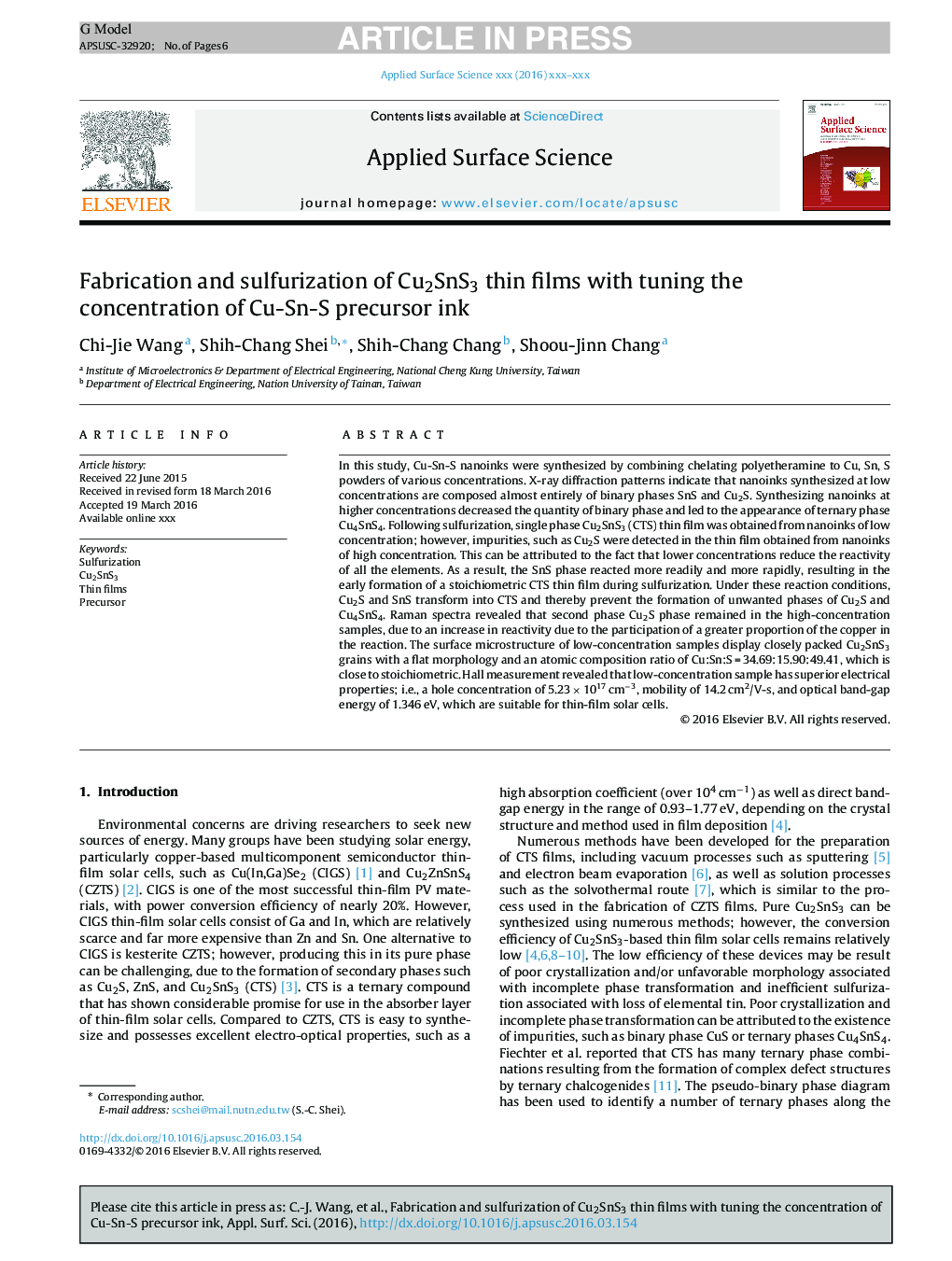| Article ID | Journal | Published Year | Pages | File Type |
|---|---|---|---|---|
| 5348509 | Applied Surface Science | 2016 | 6 Pages |
Abstract
In this study, Cu-Sn-S nanoinks were synthesized by combining chelating polyetheramine to Cu, Sn, S powders of various concentrations. X-ray diffraction patterns indicate that nanoinks synthesized at low concentrations are composed almost entirely of binary phases SnS and Cu2S. Synthesizing nanoinks at higher concentrations decreased the quantity of binary phase and led to the appearance of ternary phase Cu4SnS4. Following sulfurization, single phase Cu2SnS3 (CTS) thin film was obtained from nanoinks of low concentration; however, impurities, such as Cu2S were detected in the thin film obtained from nanoinks of high concentration. This can be attributed to the fact that lower concentrations reduce the reactivity of all the elements. As a result, the SnS phase reacted more readily and more rapidly, resulting in the early formation of a stoichiometric CTS thin film during sulfurization. Under these reaction conditions, Cu2S and SnS transform into CTS and thereby prevent the formation of unwanted phases of Cu2S and Cu4SnS4. Raman spectra revealed that second phase Cu2S phase remained in the high-concentration samples, due to an increase in reactivity due to the participation of a greater proportion of the copper in the reaction. The surface microstructure of low-concentration samples display closely packed Cu2SnS3 grains with a flat morphology and an atomic composition ratio of Cu:Sn:SÂ =Â 34.69:15.90:49.41, which is close to stoichiometric. Hall measurement revealed that low-concentration sample has superior electrical properties; i.e., a hole concentration of 5.23Â ÃÂ 1017Â cmâ3, mobility of 14.2Â cm2/V-s, and optical band-gap energy of 1.346Â eV, which are suitable for thin-film solar cells.
Related Topics
Physical Sciences and Engineering
Chemistry
Physical and Theoretical Chemistry
Authors
Chi-Jie Wang, Shih-Chang Shei, Shih-Chang Chang, Shoou-Jinn Chang,
